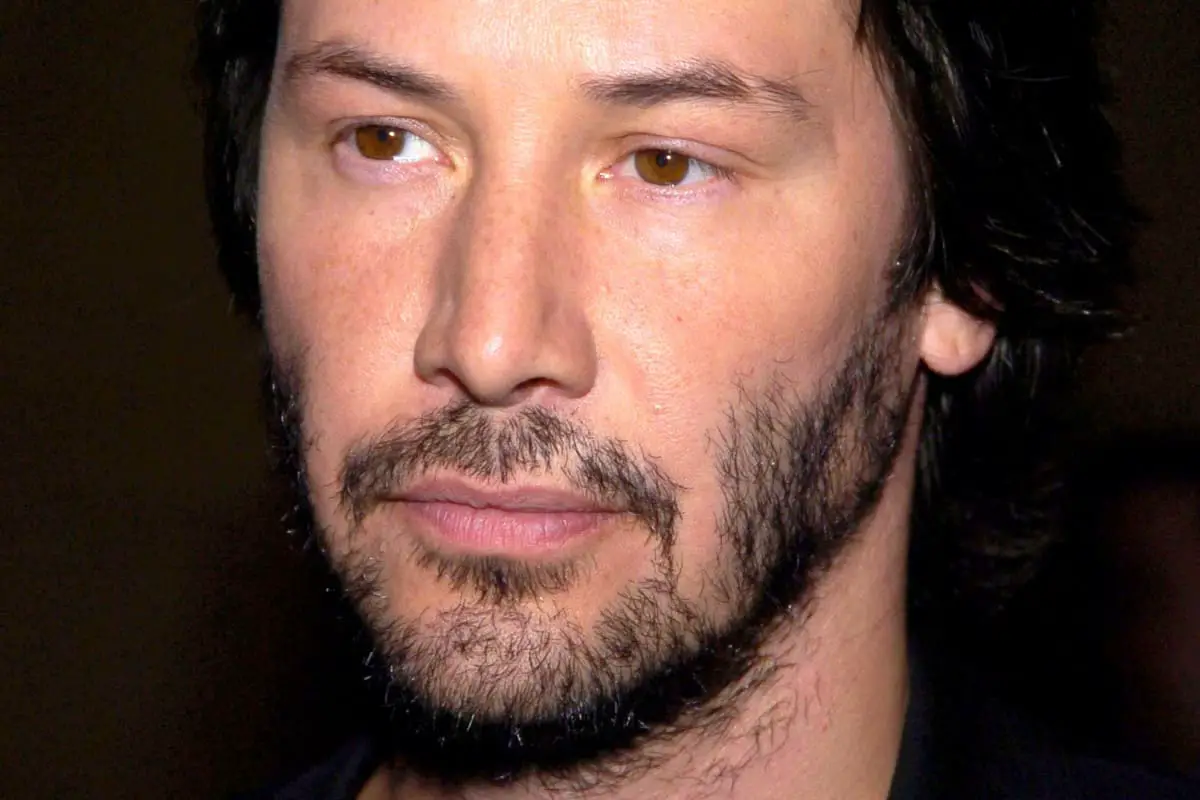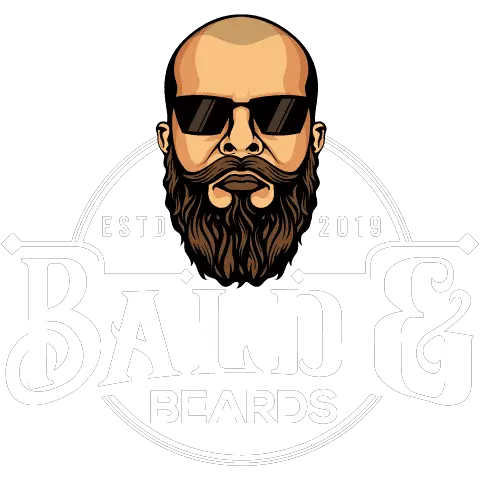If you’ve ever tried to grow facial hair only to find that your hair is missing in some spots, don’t worry – it’s called a patchy mustache. Most guys start out with thin, patchy facial hair when young and grow into a thick mustache style with time.
A patchy mustache is typically characterized by thin hair along the upper lip with spare hairs in certain spots, denoting a “patchy” appearance.
Mustache growing patterns vary from person to person, largely depending on age range or whether you’ve ever stopped shaving for even a few days.
Why is My Mustache Patchy?
If your mustache is patchy, it may simply be a lack of maturity if you’re in your mid to late teens. Many young men can grow facial hair towards the end of puberty, around age 15. However, for some men, hair grows in patches and grows thicker after 21, and for others, into their late 20s to early 30s.
Why Is My Mustache So Thin?
Thin mustache hair can be due to genetics, hormonal imbalances, or a lack of necessary nutrients. It may also be a result of aging. Improving your diet, especially protein intake, and using specific products designed for facial hair can encourage thicker growth.
How to Grow a Thicker Mustache
We put together a list of tips to help with your patchy situation so you can move on and start growing the best mustache.
1. Allow Your Mustache to Grow
The first step to any new facial hair style is letting your hair grow in. It’s the same for a patchy mustache. You’ll spend at least 2 to 3 weeks waiting for hair to fully grow in along your upper lip.
You won’t be able to get that walrus style or Tom Selleck mustache for at least a few months. These mustaches take way more time to grow because they’re full, thick mustaches that grow in stages.
Don’t believe us? Check out these celebrities with known patchy mustaches that have become part of their signature style:
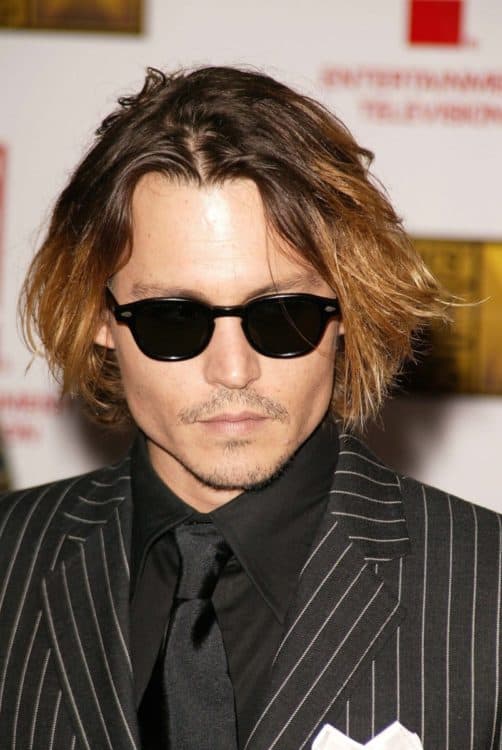
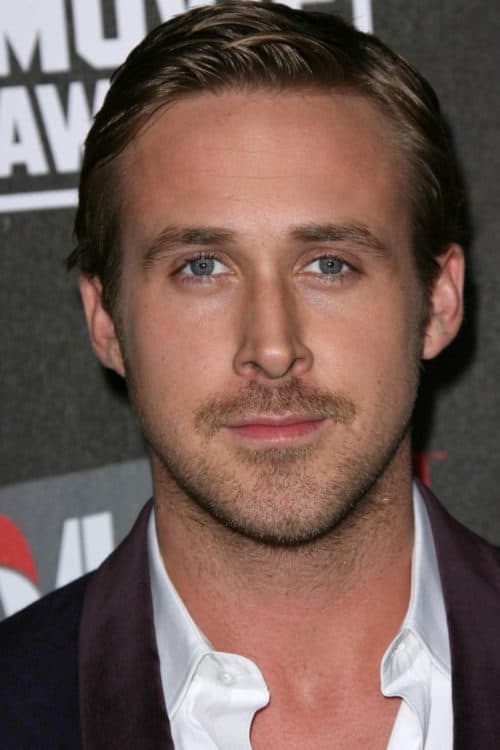
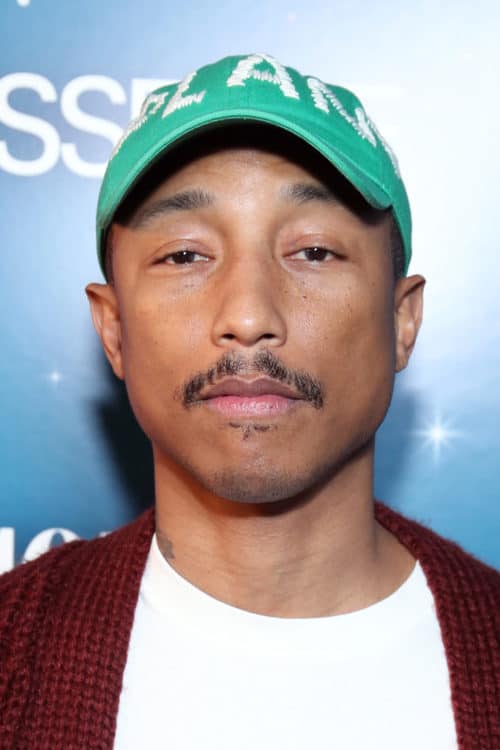
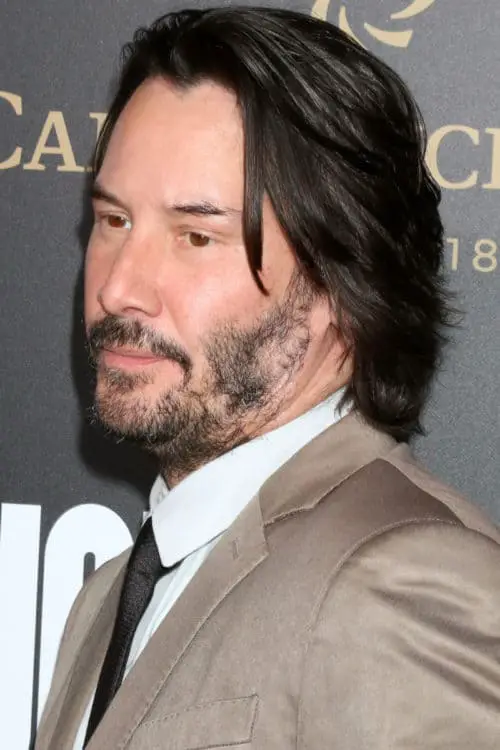
Not to worry, these same celebrities kept up with their patchy mustaches and eventually grew into thicker lip sweaters:
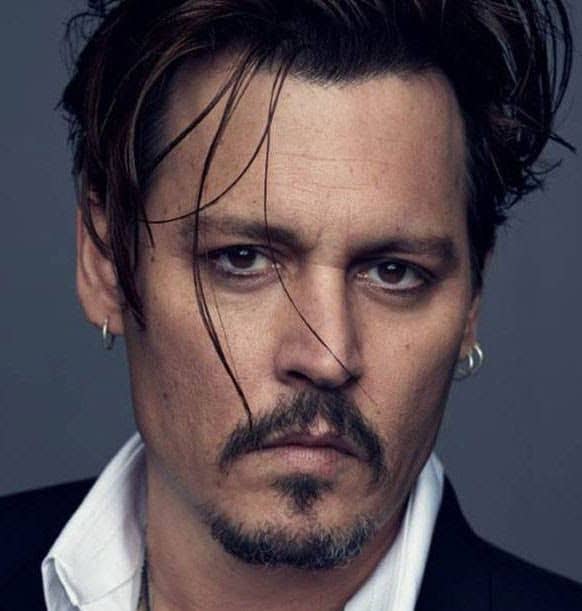
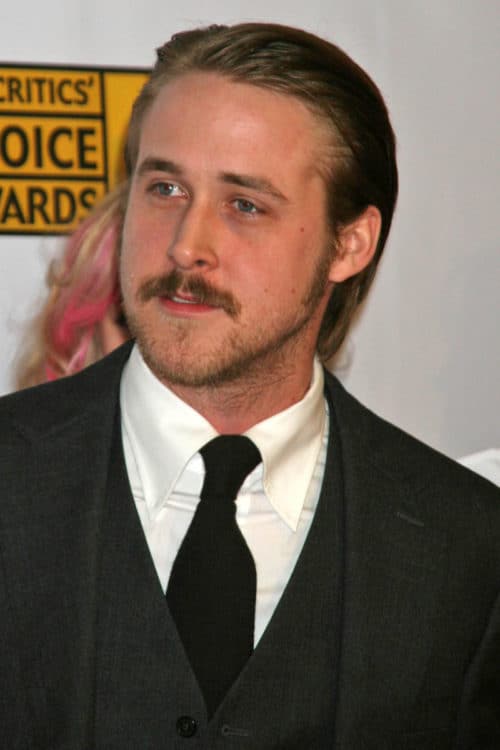
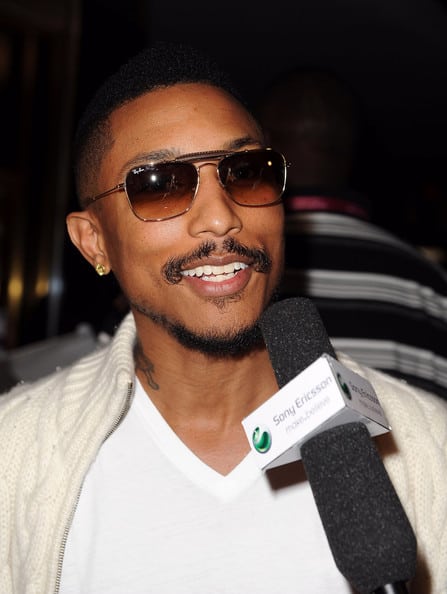
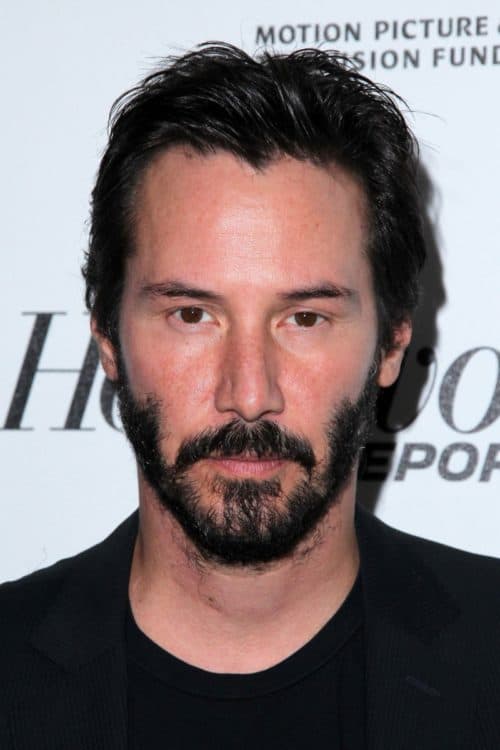
As there are all kinds of hair textures and growth patterns out there, you should check what parts of your mustache are actually missing in action. If you have lighter, wispier, or blonde mustache hair, it may take a while to grow thicker, darker mustache hair.
2. Mustache Won’t Grow in Center
You really don’t have to worry about this patchy mustache issue. Many celebrities like Johnny Depp, James Franco, Leonardo DiCaprio, and Billy Dee Williams (aka Lando Calrissian) have had issues growing facial hair in this part of the upper lip.
Take a look at some of their patchy mustache problems:
Sparse Mustache Growth
Thinner growth at first starts to come in heavier on the sides, leaving the middle a bit bereft of hair. Younger men tend to grow hair along the sides of the upper lip first.
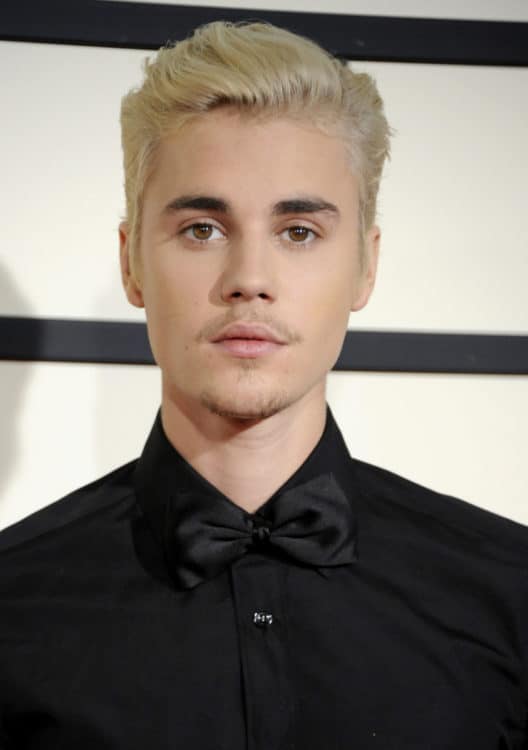
Parted at the Middle
Some mustaches don’t grow in the center for a few weeks after you stop shaving. For others like Johnny Depp, this bald spot becomes an intentional part in the middle.
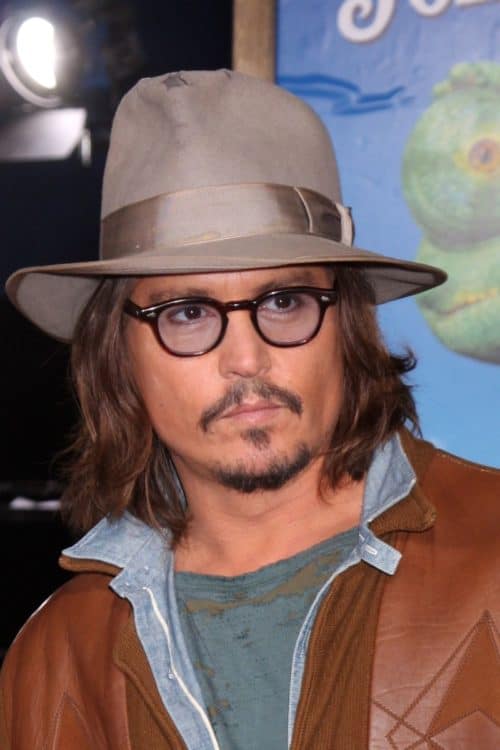
This growth pattern can be continued with a mustache comb and trimming scissors. The Tom Selleck mustache still has this somewhat neatly parted look, even though it can take months to get the same thickness.
Pencil Thin Mustache
Other men go through a pencil thin mustache style phase that eventually grows into a full beard with a mustache.
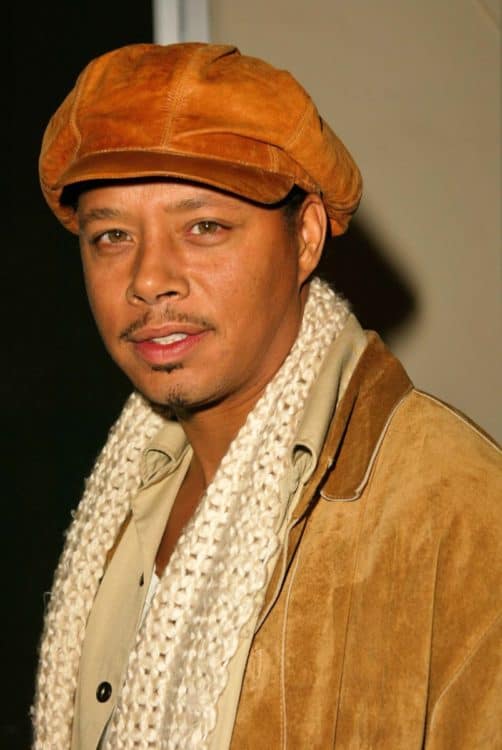
3. Use Growth products
One huge myth is that shaving will make your facial hair grow in thicker. That’s actually not the case. Guys who shave their head know this all too well, but many still hope for mustache and beard growth after clean shaving for many years.
So, if you want to thicken your mustache, there are a few different products that dermatologists and barbers recommend. Some of these methods are linked to hair growth, while others condition your beard so that it grows in thicker and healthier over time.
- Biotin creams: Best for natural hair growth, uses B vitamins to support hair follicle
- Beard balms: These will condition and moisturize the skin underneath your facial hair.
- Beard oils: Use beard oils to moisturize and add shine to your mustache hair.
- Hair growth shampoos: These may be helpful if you’re looking for gentle, daily medicated shampoos that contain biotin, keratin, zinc, and other hair growth ingredients.
- Hair growth vitamins: Vitamins and supplements may work best if you have a deficiency causing hair loss.
- Change your diet for hair growth: What you eat can directly affect your hair health. Try adding more leafy green vegetables like spinach and kale to increase your vitamin intake.
Ultimately, you’ll need to give your mustache hair a little more time to grow in after trying these products. If you trim your beard and mustache every day, brush through with a mustache comb and massage the skin with a hair growth cream to maximize results.
4. Use Minoxidil for Mustache Growth
Some Reddit users have had good results from using minoxidil mustache growth. While it hasn’t been studied, some say that using Rogaine creams for facial hair growth actually works.
By massaging minoxidil into your upper lip, you may see new growth. The active ingredient has been proven to help most men regrow hair, though it may initially come in wispy.
You should talk to your doctor before trying a medicated cream.
5. Groom Your Uneven Mustache
Since mustache hair grows in at different rates, you may wind up with a mustache that has thicker hair on one side. It’s easy to fix this using a mustache trimmer or a pair of mustache scissors.
You don’t want to cut your mustache off completely, so take it slowly and look for a mustache style that you can fill in over time. Most beard trimmers have attachments such as a liner that you can use to define the shape of your mustache.
You may want to try a beard pencil, which works like an eyebrow pencil, to shade in patchy areas.
However, unless you have a very large spot of hair missing that’s noticeable, you shouldn’t shave down your mustache so much that it loses its length on either side.
6. Try a Microneedle Derma Roller
Also known as a beard roller or derma roller, these are helpful tools that prick the skin to induce a collagen boost and hair growth. Some users have reported that these work well with beard growth serums with biotin.
7. Never Give Up on Your Mustache
If your mustache is coming in at a slower pace, you may simply have to wait until you’re older to get thicker growth. While some young men can grow their teenage beard by age 15, most men don’t hit their facial stride until after age 21 and others into their early thirties.
Whether thick, thin, or patchy, your mustache is your own, so embrace your growth pattern and work with a style that will aid you in looking sharp while you continue growing your facial hair.
FAQs
How can I make my mustache thicker?
To make your mustache thicker, improve your diet by including protein-heavy foods and vitamins B3, B5, and B9. Regularly exfoliate and moisturize the upper lip skin, and use a hair growth serum targeted for facial hair. Regular grooming, trimming, and combing also promote healthy and sizable growth.
Why are my mustache hairs so thin?
Thin mustache hairs can result from genetic factors, poor nutrition, hormonal imbalances, or age. A lack of protein, vitamins, and minerals in your diet can lead to weak hair growth. Regular exfoliation, a healthy diet, and specific beard care products may improve thickness.
How do I fix my mustache gap?
To fix a mustache gap, stimulate hair growth by frequently massaging the area, applying specialized oils or serums, and maintaining a healthy diet rich in proteins and vitamins. An alternative is to trim the mustache to blend the gap or consider a style that works with it.
Why is my mustache so thin compared to beard?
A thinner mustache compared to the beard is usually due to genetics or a slower hair growth rate in this region. Hormonal differences, age, and nutrition can also influence the thickness and density. Regular exfoliation and specialized facial hair products can help stimulate mustache growth.

